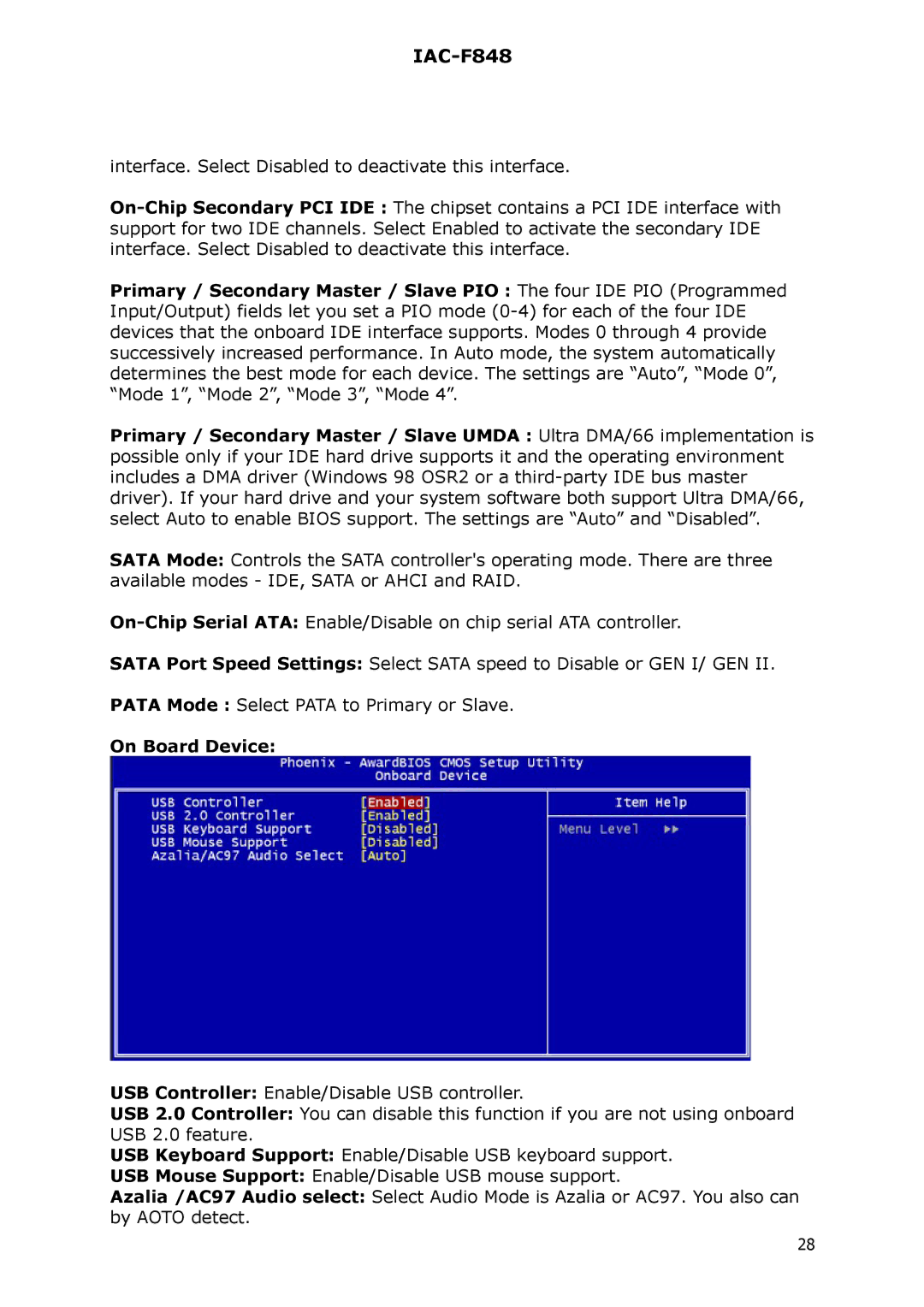
IAC-F848
interface. Select Disabled to deactivate this interface.
Primary / Secondary Master / Slave PIO : The four IDE PIO (Programmed Input/Output) fields let you set a PIO mode
Primary / Secondary Master / Slave UMDA : Ultra DMA/66 implementation is possible only if your IDE hard drive supports it and the operating environment includes a DMA driver (Windows 98 OSR2 or a
SATA Mode: Controls the SATA controller's operating mode. There are three available modes - IDE, SATA or AHCI and RAID.
SATA Port Speed Settings: Select SATA speed to Disable or GEN I/ GEN II.
PATA Mode : Select PATA to Primary or Slave.
On Board Device:
USB Controller: Enable/Disable USB controller.
USB 2.0 Controller: You can disable this function if you are not using onboard USB 2.0 feature.
USB Keyboard Support: Enable/Disable USB keyboard support.
USB Mouse Support: Enable/Disable USB mouse support.
Azalia /AC97 Audio select: Select Audio Mode is Azalia or AC97. You also can by AOTO detect.
28
